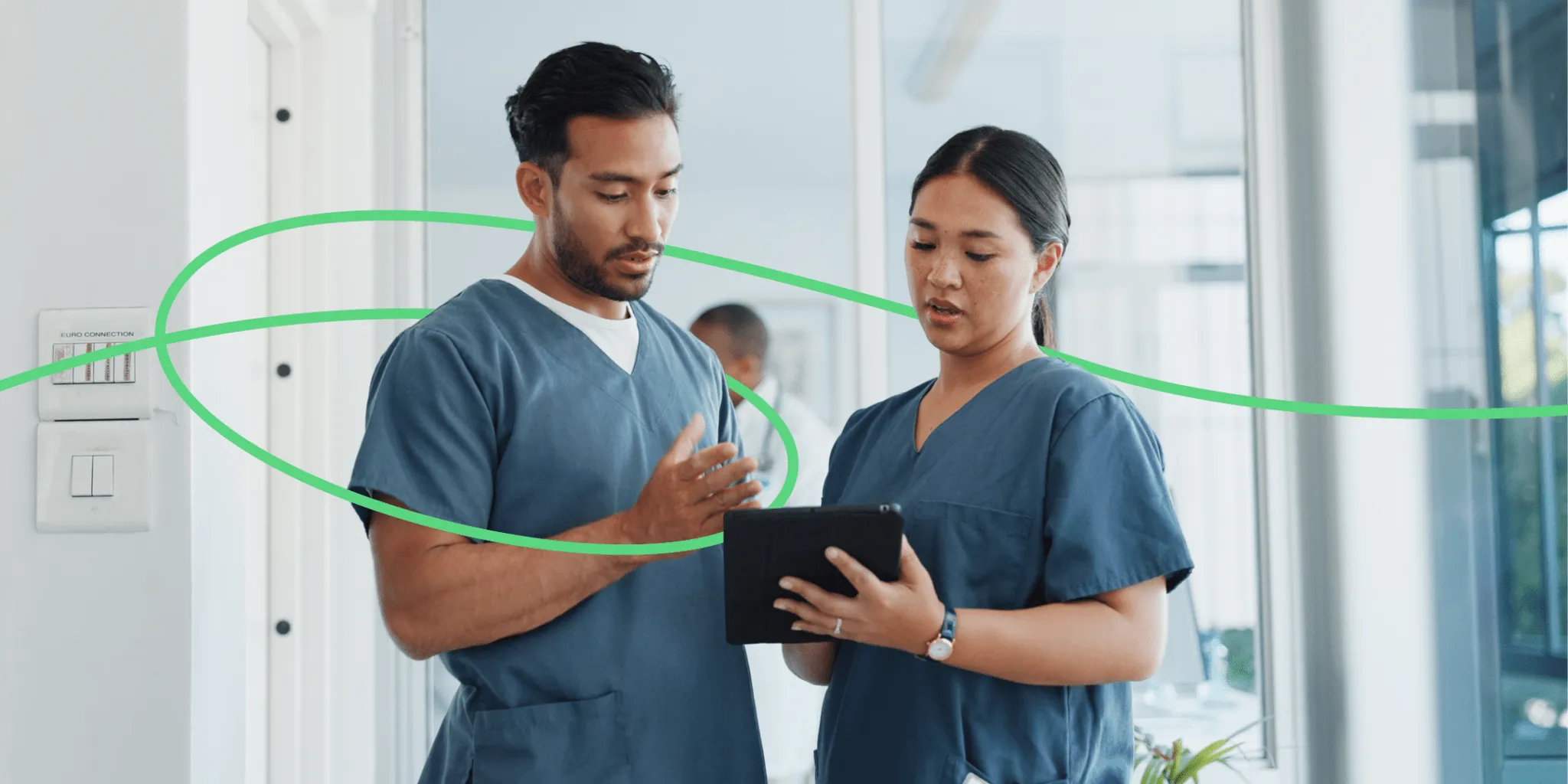2 Critical Factors For Communicating With Healthcare Workers

Caitlin Kirwan
External Contributor - Internal Comms & Engagement Expert
November 21 2023

Having an engaged and connected workforce is important in any industry, but the stakes are definitely higher for healthcare. A study from Australia showed that just a 1% increase in the engagement of hospital workers led to a 7% reduction in patient readmissions and a 3% reduction in hospital-acquired complications.
It can literally be a life-or-death situation.
Engagement also leads to greater employee retention, which is a top priority for healthcare organizations given their above-average staff turnover.
But what’s this got to do with internal communication? Well, internal communication is one of the most important foundations for building an engaged, loyal, and motivated workforce. When we get back to the basics, the entire purpose of internal communication is to align employees with the organization’s strategy and their role in delivering it. Without open and honest communication, employees feel disconnected and disengaged.
And that’s when mistakes start happening.
We’re here to help!
We explore the two most important things to consider for successfully communicating with healthcare workers – channels and content. While these might seem obvious to the seasoned internal comms pro, read on to understand why channels and content are so important for healthcare organizations in particular.
1. Channels
Let’s start by addressing the elephant in the room – employees in the healthcare sector are busy people. The majority are deskless workers, on varying shift patterns, without the time or appetite to trawl through lengthy staff newsletters or download 6 different employee apps onto their personal devices.
That’s why getting your channels right is one of the two most important factors for effective communication with healthcare employees. While other sectors might be able to get away with a slightly outdated channel mix, the healthcare industry is unforgiving on this front.
One-dimensional communication channels that aren’t user-friendly or tailored to the needs of the target audience simply won’t be used by healthcare workers.
Many of these traditional communication channels, such as noticeboards or monthly newsletters, give the internal comms team no way of knowing if the message has been received. And they offer no opportunity for two-way communication, with no avenue for employees to feed back or engage.
A great way to solve these problems and pull your IC channels into the 21st century is to bring all internal communication together into one central hub, like an interactive intranet solution or an all-encompassing employee app.
These kinds of platforms can also help to give healthcare employees a voice, and a place to connect and engage with their organization outside of their day-to-day work.
In operational environments, it’s the frontline employees who truly understand the business and can provide invaluable information and feedback. So having a two-way communication channel that enables users to interact and share their insights is a no-brainer.
And research even shows that employees are 5 times more likely to perform at their best when they feel they’re being listened to. It’s a win-win situation.
2. Content
The other most important factor for effective internal communication in healthcare organizations is content. And yes, we know, content is king for all organizations. But filtering your content with a fine tooth comb is even more critical when you’re communicating with healthcare workers.
Why?
Information overload is common in all industries, with 43% of employees saying they often miss important information and updates due to the sheer volume of communications they receive. But as we considered earlier, the stakes are significantly higher for healthcare employees. Missing just one important company message could result in a health or safety-related issue, or even jeopardize patient care.
Content should be filtered so that only the most important content that closely aligns with the internal communication strategy is pushed out to employees. It’s important to assess the value, importance, and urgency of each piece of content, and then consider the target audience.
Not every piece of content needs to be shared with all staff… segmentation is key.
To ensure that the content each employee receives is highly targeted, personalized, and relevant, create some strict rules about what content should go to which employees. For example, an organization-wide leadership announcement about an update to the patient management system will need to go to everyone. However, the audience for a piece of content that is department or grade-specific will be much narrower. Employees should only receive information that is truly relevant to them.
Level up your internal communications with Workvivo
Workvivo is an employee communication platform with the power to bring your entire healthcare organization together – whether they’re behind a desk, in a hospital, or in a lab.
Our platform puts both channels and content in the spotlight, helping your employees to communicate, share ideas, and better understand your organization’s core mission and values.
